Looking out for waterbirds from high above
For nearly four decades, UNSW scientists, with researchers from the NSW Department of Planning, Industry and Environment and other state agencies, have been surveying Australia’s waterbirds once a year.
For nearly four decades, UNSW scientists, with researchers from the NSW Department of Planning, Industry and Environment and other state agencies, have been surveying Australia’s waterbirds once a year.
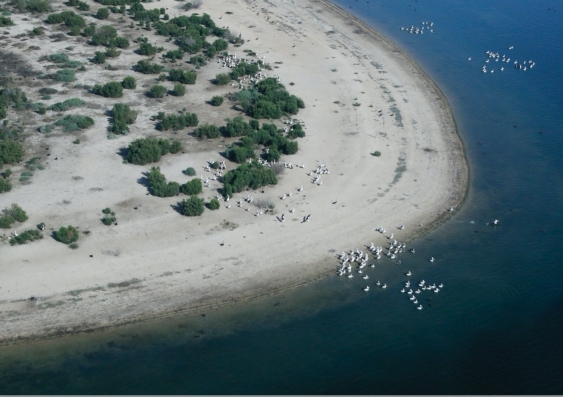
UNSW’s annual waterbird survey – a unique dataset that allows scientists to monitor more than 50 species, and assess the health of rivers and wetlands – kicked off in early October. Even though it’s all a little bit different to previous years, due to COVID-19 restrictions, the team has already made interesting observations onboard the small plane that’s taking them across huge parts of Australia in search of waterbirds.
"Our 39th year of survey is underway with some considerable challenges around COVID restrictions, given we are trying to survey wetlands and waterbirds across a third of the continent, including four states. It's also been a wet year so far – so there’s likely to be lots of water around,” says Professor Richard Kingsford.
Every year, Prof. Kingsford and his team from UNSW Science’s Centre for Ecosystem Science (CES) with project coordinator Dr John Porter from the NSW Department of Planning, Industry and Environment (DPIE) spend more than a hundred hours conducting the Eastern Australian Waterbird Survey – one of the largest wildlife surveys in Australia. They survey major wetland sites across eastern Australia, including the Murray-Darling Basin, providing invaluable information on the ecosystem health of wetlands and rivers.
Aerial survey of waterbirds provides one of the few quantitative, large scale biodiversity datasets that can monitor changes in the distribution and abundance of 50 waterbird species, including threatened species, and the health of rivers and wetlands.
Senior Scientist Dr John Porter from DPIE, who has flown on the surveys for 33 years, says the project is not just about scientific monitoring but is crucial to managing the wetlands of Eastern Australia.
“The survey is a really great example of a large-scale, long-term monitoring program that’s delivered insights and informed policy decisions on managing habitats, environmental water flows and wildlife,” Dr Porter says.
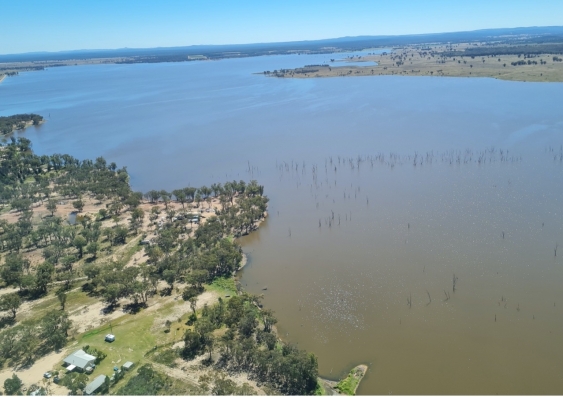
Coolmunda Dam. Photo: Richard Kingsford
On day one, the team surveyed Coolmunda Dam. The dam was full but did not have as many waterbirds as in the dry years, when it's a major refuge – but there were flocks of grey teal and different cormorant species.
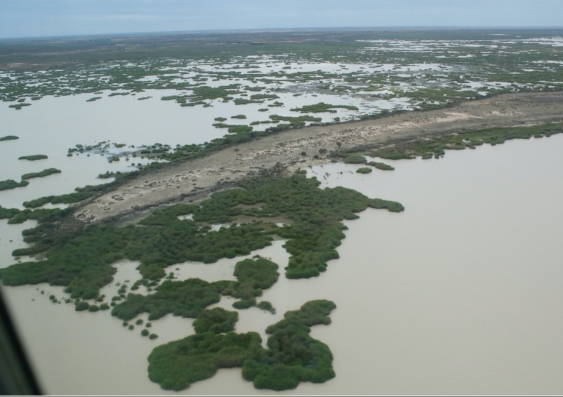
The Bulloo River pours out on a massive floodplain, the Bulloo Overflow, filling the two Bulloo Lakes in Queensland . Photo: Richard Kingsford
The Bulloo River is one of the team’s favourites: it’s picturesque and one of the few largely free flowing rivers, with very little river extraction. As a result, it is very healthy from an ecological point of view. This river then pours out on a massive floodplain, the Bulloo Overflow, filling the two Bulloo Lakes in Queensland and then into NSW to supply the newly established Narriearra National Park, near Tibooburra.
“Even though the lakes had quite a bit of water this year, there were relatively few waterbirds,” Prof. Kingsford says. “We saw a few flocks of grey teal, black duck, glossy ibis, and pelicans. There were also up to 50 brolgas, which looked great – but not the thousands of waterbirds that we usually observe on these two lakes.”
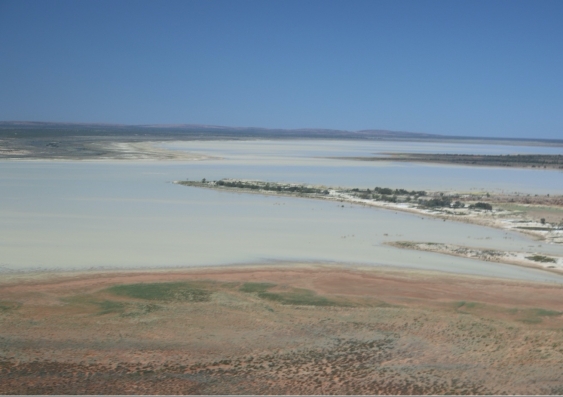
Peery Lake. Photo: Richard Kingsford
Peery Lake is part of the Paroo-Darling National Park, a wetland of international importance under the Ramsar Convention. “Peery Lake had many more waterbirds than last year, likely because it was very shallow, allowing thousands of pink-eared ducks to feed on the small invertebrates that this specialist waterbird depend on,” Prof. Kingsford says. “There were also grey teal, a few freckled ducks and the odd swan.”
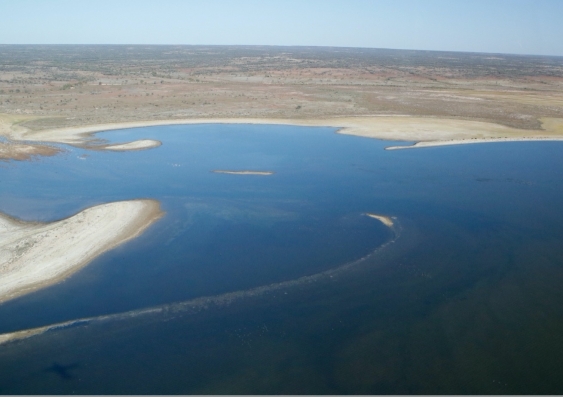
Lake Wyara. Photo: Richard Kingsford
Lake Wyara, the salt lake of the Currawinya Lakes, is one of the most important wetlands for waterbirds on this continent. “Surveying it this year was amazing,” Prof. Kingsford says. “It was some time since we'd seen so many waterbirds on the lake. It was a wonderful opportunity to count this amazing lake – exhausting work but also exhilarating. We were flat out counting as fast as we possibly could with so many waterbirds in such dense numbers.”
There were up to a 100,000 waterbirds or more on this lake, including thousands of pink-eared ducks, Eurasian coot, hardheads, and black swans with hundreds of cygnets. There was also a colony of up to 50 breeding Australian pelicans on the lake, along with quite a few swan nests.
If you want to follow along as the scientists wing their way across a third of Australia, you can catch up on each day's flying on the team’s blog.